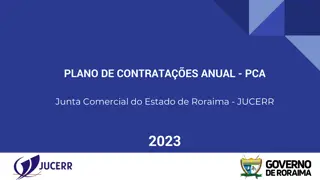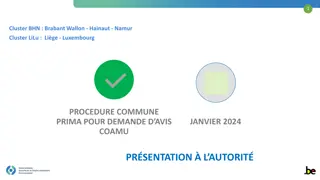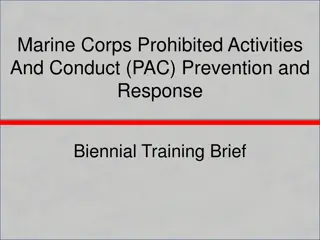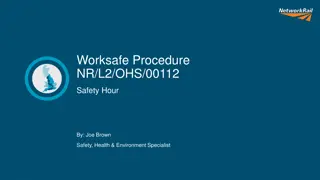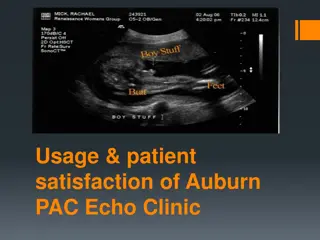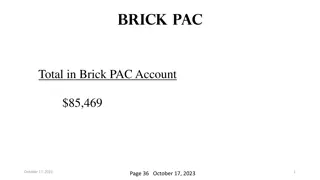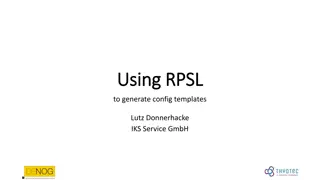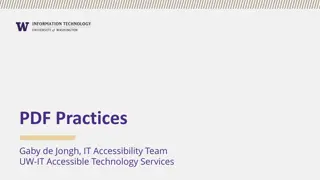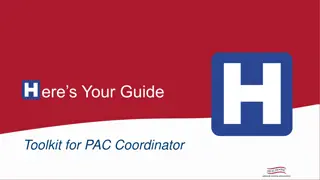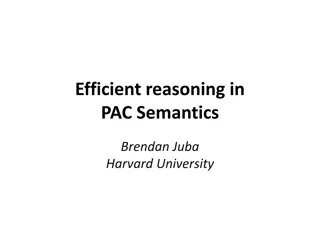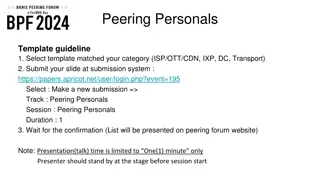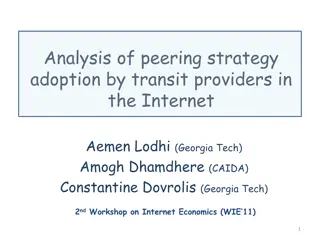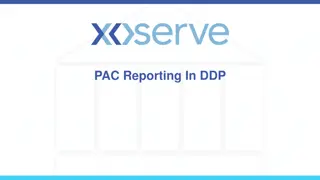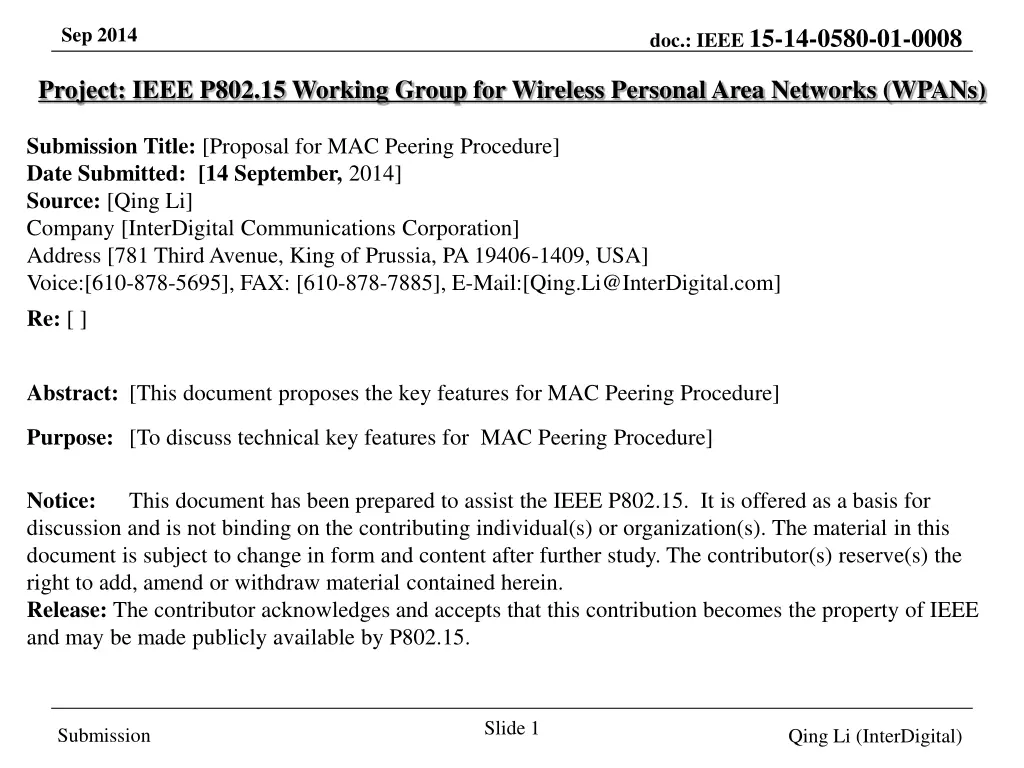
IEEE MAC Peering Procedure Proposal
Explore the IEEE proposal for MAC peering procedure submitted by Qing Li from InterDigital Communications Corporation. The document outlines key technical features and steps involved in the peering process for Wireless Personal Area Networks (WPANs), including authentication, communication link parameters, and establishing link connections. Learn about peering request and response messages, authentication, authorization, and communication session parameters. This insightful proposal aims to enhance the MAC peering process within the IEEE P802.15 Working Group.
Download Presentation

Please find below an Image/Link to download the presentation.
The content on the website is provided AS IS for your information and personal use only. It may not be sold, licensed, or shared on other websites without obtaining consent from the author. If you encounter any issues during the download, it is possible that the publisher has removed the file from their server.
You are allowed to download the files provided on this website for personal or commercial use, subject to the condition that they are used lawfully. All files are the property of their respective owners.
The content on the website is provided AS IS for your information and personal use only. It may not be sold, licensed, or shared on other websites without obtaining consent from the author.
E N D
Presentation Transcript
Sep 2014 doc.: IEEE 15-14-0580-01-0008 Project: IEEE P802.15 Working Group for Wireless Personal Area Networks (WPANs) Submission Title: [Proposal for MAC Peering Procedure] Date Submitted: [14 September, 2014] Source: [Qing Li] Company [InterDigital Communications Corporation] Address [781 Third Avenue, King of Prussia, PA 19406-1409, USA] Voice:[610-878-5695], FAX: [610-878-7885], E-Mail:[Qing.Li@InterDigital.com] Re: [ ] Abstract: [This document proposes the key features for MAC Peering Procedure] Purpose: [To discuss technical key features for MAC Peering Procedure] Notice: discussion and is not binding on the contributing individual(s) or organization(s). The material in this document is subject to change in form and content after further study. The contributor(s) reserve(s) the right to add, amend or withdraw material contained herein. Release: The contributor acknowledges and accepts that this contribution becomes the property of IEEE and may be made publicly available by P802.15. This document has been prepared to assist the IEEE P802.15. It is offered as a basis for Slide 1 Submission Qing Li (InterDigital)
Sep. 2014 <July 2014> doc.: IEEE 15-14-0580-01-0008 Motion15: Peering Procedure The peering procedure is initiated by sending a peering request message including peering information. Responder shall send a peering response message to requestor to indicate whether the peering request is accepted or rejected. The response message may include peering information if the request is accepted. Slide 2 Sli de Qing Li (InterDigital) <TG8 Group> Submission
Sep. 2014 doc.: IEEE 15-14-0580-01-0008 Peering Procedure Peering procedure may include the following: Optional: Authentication & Authorization (full validation) Communication link parameters are TBD, such as link ID, device capability (i.e. #antenna, MIMO), QoS, channel band, transmission power, round trip delay, device capability, etc. Establish the link connection. Slide 3 Qing Li (InterDigital) Submission
Sep. 2014 doc.: IEEE 15-14-0580-01-0008 Procedure One One- -to to- -One Peering One Peering Procedure PD1 PD2 MAC Higher Layer MAC Higher Layer PEER_REQ.request Peering Request (air) ACK PEER_REQ.indication Optional: Authentication & Authorization (TBD) PEER_REQ.response Peering Response (air) ACK PEER_REQ.confirm Optional: Establish link Slide 4 Qing Li (InterDigital) Submission
Sep. 2014 doc.: IEEE 15-14-0580-01-0008 Peering Procedure (Marco s comments) Communication session parameters: Estimate of the transmission power of the PDrequesting peering, channel band used for peering and RAP-ID (random access preamble-ID). Establish the link connection 1. PD2 sends a RAP to PD1 requesting peering, which is contention based. It is randomly selected from a pool of orthogonal ZC sequences that belong to the RAP Group supported by PD1. Moreover, such RAP contains finer frequency granularity for PD1 to acquire fine time and frequency synchronization of PD2, plus information about the resources needed to transmit in 3). 2. PD1 replies with a RA response message. It is broadcast and contains timing information (round-trip delay), RAP-ID of PD2, plus resources, like time slot or time-frequency slot, to transmit in 3), etc. 3. PD2 sends a scheduling request (note that it is contention free). It contains scheduling request information for transmission. If this message is successfully detected in PD1, still contention remains unsolved for other terminals. 4. Contention resolution. PD1 echoes PD2 ID contained in 3) PD2 detects its ID and sends ACK (RA terminated) a communication link is scheduled and established. PD2 detects another ID (RA terminated, starts a new one) PD2 fails to detect ID (RA terminated, starts a new one). Slide 5 Qing Li (InterDigital) Submission
Sep. 2014 <July 2014> doc.: IEEE 15-14-0580-01-0008 Motion16: Re-peering Procedure Re-peering procedure is similar to peering procedure. The main differences are: 1) some of the previous peering information may not be included in request and response messages; 2) the PD receiving the re-peering request validates re- peering information with the corresponding peering information before it accepts the re-peering request. TBD: parameters for validation may be Peering IDs, or Link IDS, etc. Slide 6 Sli de Qing Li (InterDigital) <TG8 Group> Submission
Sep. 2014 doc.: IEEE 15-14-0580-01-0008 Re-peering Procedure Re-peering procedure may include the following: Optional: Authentication & Authorization update (light validation) Update communication session parameters - TBD. Re-establish the link connection Slide 7 Qing Li (InterDigital) Submission
Sep. 2014 doc.: IEEE 15-14-0580-01-0008 Procedure One One- -to to- -One Peering One Peering Procedure PD1 PD2 MAC Higher Layer MAC Higher Layer RE-PEER_REQ.request Re-peering Request (air) ACK RE-PEER_REQ.indication Optional: Authentication & Authorization update (TBD) Re-peering Response (air)RE-PEER_REQ.response ACK RE-PEER_REQ.confirm Optional: Re-establish link Slide 8 Qing Li (InterDigital) Submission
Sep. 2014 <July 2014> doc.: IEEE 15-14-0580-01-0008 Motion17: De-peering Procedure De-peering procedure starts with a de- peering request. De-peering response is optional. Slide 9 Sli de Qing Li (InterDigital) <TG8 Group> Submission
Sep. 2014 doc.: IEEE 15-14-0580-01-0008 De-peering Procedure De-peering procedure may include the following: Xyz Slide 10 Qing Li (InterDigital) Submission
Sep. 2014 doc.: IEEE 15-14-0580-01-0008 Peering Update Procedure Peering Update procedure may include the following: (not currently mentioned in Peering, but we may discuss if it s needed) Update communication session parameters, such as QoS, channel, time interval, etc. Update or refresh the link connection Slide 11 Qing Li (InterDigital) Submission
Sep. 2014 doc.: IEEE 15-14-0580-01-0008 Procedure One One- -to to- -One Peering One Peering Procedure PD1 PD2 MAC Higher Layer MAC Higher Layer PEERUP_REQ.request PeeringUp Request (air) ACK PEERUP_REQ.indication PeeringUp Response (air)PEERUP_REQ.response ACK PEERUP_REQ.confirm Optional: Update link Slide 12 Qing Li (InterDigital) Submission



